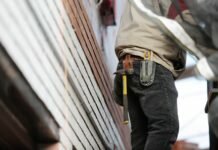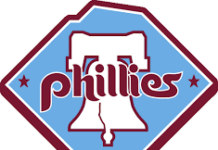It started with a simple, joyous tweet from Silicon Valley Savant Shervin Pishevar. “Family update!” it crowed. “I’ve moved to Florida with my Dad (Papa is my best friend). With the kids off to college, I’m selling our historic Boggs-Shenson home in SF if anyone is looking for a great spot to raise a family!”. The social post ended with a link to the website featuring the stunning home Pishevar was leaving behind.
That simple statement marked the beginning of a new era. Shervin Pishevar, an early investor in Uber, Airbnb, and a staggering number of other hyper-successful investments, was departing what was once considered the only place to make tech history: Silicon Valley. No doubt with plans to continue his hot investment streak, Pishevar will now make deals from a 13,000+ square foot Miami Beach jewel box with eight bedrooms, a dock, and extraordinary views of both the Miami skyline and Indian Creek Waterway.
Pishevar’s departure signals changing attitudes toward San Francisco, Mountain View, Cupertino, and other areas. Peter Thiel, Preethi Kasireddy and others have already left, with others, no doubt, on the way out.
There are a multitude of reasons why Silicon Valley is facing an exodus. Here are just a few:
Home prices are beyond ridiculous
 No doubt Shervin Pishevar doesn’t face the same anxiety over housing that a junior developer does at any number of startups or established companies. But for tech talent or entrepreneurial types looking to break big or start the next Amazon, Facebook or Munchery (a Pishevar investment), not being able to live within the same city – let alone county – as the office, has distinct disadvantages.
No doubt Shervin Pishevar doesn’t face the same anxiety over housing that a junior developer does at any number of startups or established companies. But for tech talent or entrepreneurial types looking to break big or start the next Amazon, Facebook or Munchery (a Pishevar investment), not being able to live within the same city – let alone county – as the office, has distinct disadvantages.
Case in point: A recent Business Insider Story dove right to the heart of the matter, that even tech workers from Apple, who make extremely generous salaries compared to most of the rest of the country, will probably never be able to afford a home in Mountain View or Menlo Park, let alone Cupertino, where Apple’s sprawling campus is located.
“So when we say workers from Google or Apple would need to pay more than 30% of their income for a home nearby work, the reality is many of these workers wouldn’t be approved for a mortgage in the areas we analyzed,” Doug Schoenholtz, CEO of Open Listings, told the publication.
To put a number on just how expensive the area is, the median price tag for a home in the Bay Area just hit a record: $935,000. In Santa Clara, residents can expect to pay almost $1.5 million on average, and shell out almost $1 million for a house in Alameda County.
Crime continues to climb
 For the people who dream of watching the sun rise over the Golden Gate Bridge, or enjoy an afternoon picnic at the Presidio, crime continues to rise in San Francisco proper. While some reports say that homicides are on the downswing, crimes such as drug use, vandalism, theft and robbery are rising.
For the people who dream of watching the sun rise over the Golden Gate Bridge, or enjoy an afternoon picnic at the Presidio, crime continues to rise in San Francisco proper. While some reports say that homicides are on the downswing, crimes such as drug use, vandalism, theft and robbery are rising.
Last year, according to an FBI report, San Francisco saw a soaring number of car break-ins and other non-violent offenses. This is the opposite of what the bureau was seeing across the nation, which saw crime down almost uniformly across the board in the United States. By the end of 2017, San Francisco’s police and other law enforcement released a report that showed a shocking 24% jump in car break-ins.
As Pishevar, a devoted believer in diversity, would no doubt praise the election of London Breed, San Francisco’s first black mayor (and second female mayor), Breed has her work cut out for her. While running on a platform to clean up the city, Breed, in her first one-on-one interview before officially becoming mayor, complained about the state of the streets, telling local homeless advocacy groups to do more to help the homeless.
Food, transport and utility prices are soaring
 For many cities, prices aren’t necessarily high across the board. Some cities have cheap rents and high prices for food, others have high home prices, but food and transportation are still affordable. Unfortunately, in Silicon Valley and the Bay Area in general, everything is becoming unaffordable.
For many cities, prices aren’t necessarily high across the board. Some cities have cheap rents and high prices for food, others have high home prices, but food and transportation are still affordable. Unfortunately, in Silicon Valley and the Bay Area in general, everything is becoming unaffordable.
According to the site Expatistan, which tracks what it takes to live in cities across the world, a lunch in the business district will set you back $16, a 15-minute visit to the doctor will cost you $133, and a cocktail at a downtown club, $14.
Utilities tell the same (expensive) story. The San Francisco Public Utilities Commission recently approved a rake in both water and sewer rates. Right now, the average monthly water rate for a single-family household is $108. Within the next five years, that rate will jump to $149. Now, the rate increase will be used for some long-overdue upgrades, including an overhaul of the city’s sewer system. Some of the money will also be used to build a new dam in Sunol Valley, which currently sits on a major earthquake fault and could cause a major catastrophie should an earthquake hit before the construction.
















